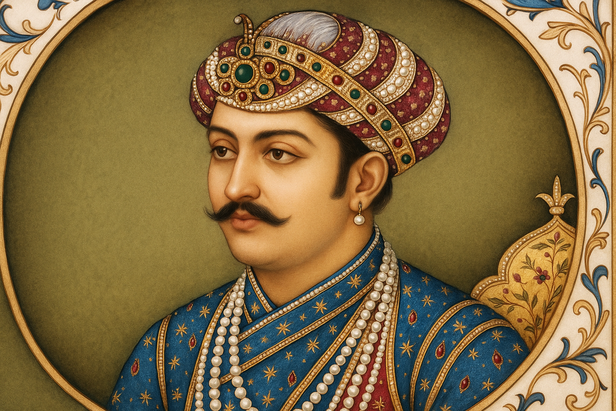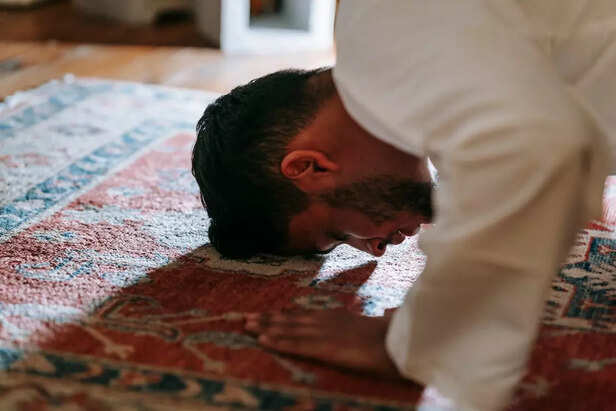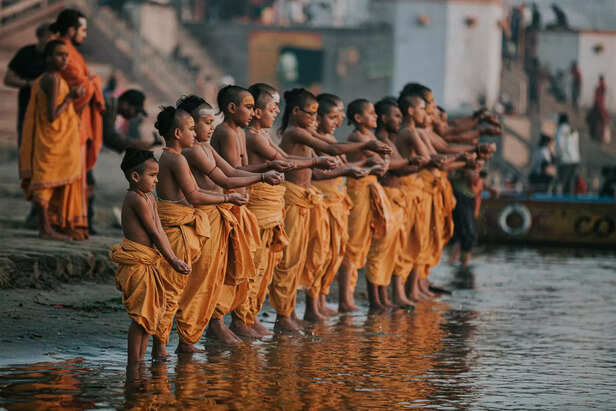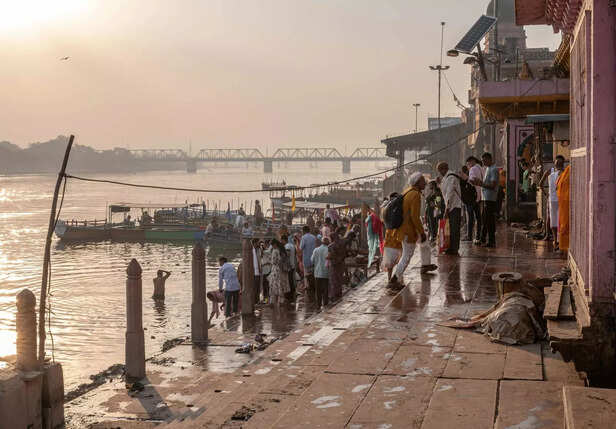From Mecca to Mathura: The Mughal Search for a Universal God
Nidhi | Jun 24, 2025, 17:10 IST
( Image credit : ANI, Timeslife )
Most people know the Mughals as conquerors and kings—but few realize that emperors like Akbar and Dara Shikoh were also spiritual seekers. This article uncovers their forgotten journey from orthodox Islam toward a deeper, universal understanding of God. From translating the Upanishads to building the Ibadat Khana for interfaith dialogue, their path moved from Mecca to Mathura—both literally and philosophically. Rooted in historical records and Persian texts, this piece explores how the Mughals tried to unite Hindu and Islamic wisdom into a single spiritual vision that still speaks to modern India.
Did you know that some of India’s most powerful Islamic rulers spent decades studying Hinduism, translating the Vedas, meditating in silence, and even creating a spiritual path that borrowed from Jainism, Christianity, and Zoroastrianism?
When we think of the Mughal Empire, we often picture swords, sultans, and stone palaces. But hidden behind the grandeur is a profound story of spiritual exploration—where emperors like Akbar and Dara Shikoh looked beyond the Quran and toward the Bhagavad Gita, the Upanishads, and the mystical traditions of every major religion they encountered.
This is not just history—it’s a forgotten journey of the soul. And it changed India forever.

Did you know that Emperor Akbar (1542–1605) stopped performing Namaz (Islamic prayer) in his mid-thirties—not due to rebellion, but spiritual introspection?
According to Abul Fazl’s Ain-i-Akbari, Akbar found the external rituals of Islam limiting in his search for inner truth. He became increasingly influenced by Sufi mysticism, particularly the Chishti Order, which emphasized love, tolerance, and union with the Divine beyond forms.
He surrounded himself with mystics and philosophers. At the age of 34, Akbar started the Ibadat Khana (House of Worship) in Fatehpur Sikri (1575 CE), where he invited Sunni and Shia Muslims, Hindus, Jains, Zoroastrians, Jews, Jesuits from Goa, and even atheists for late-night discussions on theology.
“Truth is the property of none. It belongs to God and can be found in many forms,” Akbar reportedly told his courtiers.
But as debates turned into heated arguments, Akbar concluded that spiritual arrogance was the real enemy of truth. He began withdrawing from formal religion and turned toward a more inward, ethical path.

Did you know Akbar founded a spiritual order in 1582 called Din-i Ilahi, but it was not a “religion” in the conventional sense?
The Din-i Ilahi (Religion of God) was Akbar’s attempt to synthesize the moral and spiritual teachings of all major religions in his empire. Drawing from Islamic Sufism, Hindu Advaita, Jain ahimsa, Christian charity, and Zoroastrian purity, it promoted:
While the Din-i Ilahi never spread widely, it remains perhaps the world’s first royal attempt at interfaith unity.

Did you know Akbar read and discussed the Mahabharata and the Ramayana almost daily?
Between 1574–1584, Akbar ordered Persian translations of key Hindu texts:
He also:

Did you know Akbar personally visited the temples of Mathura and Vrindavan and offered donations to Krishna bhakti temples?
In 1570 CE, Akbar traveled to the region and met with Vaishnava saint Harivamsa Goswami, the head of the Radha Vallabh sect. He was deeply moved by the intense devotion of Krishna bhaktas and ordered the construction of Govind Dev temple in Vrindavan, which was partially funded by the imperial treasury.
Akbar also ensured:
Did you know that Dara Shikoh, Akbar’s great-grandson and Shah Jahan’s eldest son, called the Upanishads “the greatest treasure hidden under the veil of the Quran?”
Dara Shikoh (1615–1659) was a mystic prince and Sufi scholar who believed in wahdat al-wujud—the unity of all existence. He studied under Miyan Mir, the same Sufi saint who laid the foundation of the Golden Temple in Amritsar.
Dara:
Sadly, Dara was seen as a heretic by the orthodox clergy. His brother Aurangzeb captured and executed him in 1659, destroying manuscripts and reversing policies of tolerance. With Dara’s death, the last spiritual spark of the Mughal soul was extinguished.
 From Mecca to Mathura, the journey of the Mughal emperors was more than one of conquest—it was a quest for meaning.
From Mecca to Mathura, the journey of the Mughal emperors was more than one of conquest—it was a quest for meaning.
Akbar’s faith was not in religion—but in human conscience. Dara’s God did not wear a turban or tilak—He resided in the silence between two mantras, between two prayers. Together, they imagined a world where Allah and Ishwar, Quran and Veda, Kaaba and Kashi—were doors to the same house.
Their legacy is not just architectural—it is philosophical. It asks us:
If an emperor could question dogma and search for truth across faiths, can’t we?
When we think of the Mughal Empire, we often picture swords, sultans, and stone palaces. But hidden behind the grandeur is a profound story of spiritual exploration—where emperors like Akbar and Dara Shikoh looked beyond the Quran and toward the Bhagavad Gita, the Upanishads, and the mystical traditions of every major religion they encountered.
This is not just history—it’s a forgotten journey of the soul. And it changed India forever.
1. Akbar’s Turn Inward: A Shift from Orthodoxy to Mysticism

Akbar
( Image credit : Times Life Bureau )
Did you know that Emperor Akbar (1542–1605) stopped performing Namaz (Islamic prayer) in his mid-thirties—not due to rebellion, but spiritual introspection?
According to Abul Fazl’s Ain-i-Akbari, Akbar found the external rituals of Islam limiting in his search for inner truth. He became increasingly influenced by Sufi mysticism, particularly the Chishti Order, which emphasized love, tolerance, and union with the Divine beyond forms.
He surrounded himself with mystics and philosophers. At the age of 34, Akbar started the Ibadat Khana (House of Worship) in Fatehpur Sikri (1575 CE), where he invited Sunni and Shia Muslims, Hindus, Jains, Zoroastrians, Jews, Jesuits from Goa, and even atheists for late-night discussions on theology.
“Truth is the property of none. It belongs to God and can be found in many forms,” Akbar reportedly told his courtiers.
But as debates turned into heated arguments, Akbar concluded that spiritual arrogance was the real enemy of truth. He began withdrawing from formal religion and turned toward a more inward, ethical path.
2. Din-i Ilahi: The Faith of God, Not Men

Faith.
( Image credit : Pexels )
Did you know Akbar founded a spiritual order in 1582 called Din-i Ilahi, but it was not a “religion” in the conventional sense?
The Din-i Ilahi (Religion of God) was Akbar’s attempt to synthesize the moral and spiritual teachings of all major religions in his empire. Drawing from Islamic Sufism, Hindu Advaita, Jain ahimsa, Christian charity, and Zoroastrian purity, it promoted:
- Belief in one universal God
- Rejection of caste and sectarianism
- Vegetarianism (inspired by Jain and Vaishnavite ethics)
- Daily meditation and self-reflection
- Loyalty to truth above all
While the Din-i Ilahi never spread widely, it remains perhaps the world’s first royal attempt at interfaith unity.
3. Akbar’s Relationship with Hinduism Was Deep, Not Political

Hinduism
( Image credit : Pexels )
Did you know Akbar read and discussed the Mahabharata and the Ramayana almost daily?
Between 1574–1584, Akbar ordered Persian translations of key Hindu texts:
- The Mahabharata was translated as Razmnama (“Book of War”) by a team of scholars under Faizi.
- The Ramayana, Atharva Veda, and Yoga Vashishta were also translated into Persian.
- Akbar also learned about Puranic cosmology, Bhakti traditions, and even tantric practices from Brahmin advisors.
He also:
- Abolished jizya (tax on non-Muslims) in 1564
- Prohibited cow slaughter across large parts of the empire
- Restored and protected temples in Mathura, Banaras, and Ujjain
4. Mathura, Vrindavan, and the Mughal Embrace of Krishna

Mathura
( Image credit : Pexels )
Did you know Akbar personally visited the temples of Mathura and Vrindavan and offered donations to Krishna bhakti temples?
In 1570 CE, Akbar traveled to the region and met with Vaishnava saint Harivamsa Goswami, the head of the Radha Vallabh sect. He was deeply moved by the intense devotion of Krishna bhaktas and ordered the construction of Govind Dev temple in Vrindavan, which was partially funded by the imperial treasury.
Akbar also ensured:
- Complete religious freedom in the Braj region
- Protection of pilgrimage routes
- Royal grants for Sanskrit schools (pathshalas)
5. Dara Shikoh: The Mughal Prince Who Translated the Upanishads
Dara Shikoh (1615–1659) was a mystic prince and Sufi scholar who believed in wahdat al-wujud—the unity of all existence. He studied under Miyan Mir, the same Sufi saint who laid the foundation of the Golden Temple in Amritsar.
Dara:
- Translated 50 Upanishads into Persian as Sirr-e-Akbar (“The Great Secret”) in 1657
- Translated the Bhagavad Gita into Persian
- Wrote Majma-ul-Bahrain (“The Confluence of Two Oceans”), comparing Hindu Vedanta and Islamic Sufism
Sadly, Dara was seen as a heretic by the orthodox clergy. His brother Aurangzeb captured and executed him in 1659, destroying manuscripts and reversing policies of tolerance. With Dara’s death, the last spiritual spark of the Mughal soul was extinguished.
A Forgotten Legacy of Spiritual Unity

AP PHOTOS_ Millions of Muslims embark on the annual Hajj pilgrimage to Mecca (1).
( Image credit : AP )
Akbar’s faith was not in religion—but in human conscience. Dara’s God did not wear a turban or tilak—He resided in the silence between two mantras, between two prayers. Together, they imagined a world where Allah and Ishwar, Quran and Veda, Kaaba and Kashi—were doors to the same house.
Their legacy is not just architectural—it is philosophical. It asks us:
If an emperor could question dogma and search for truth across faiths, can’t we?
